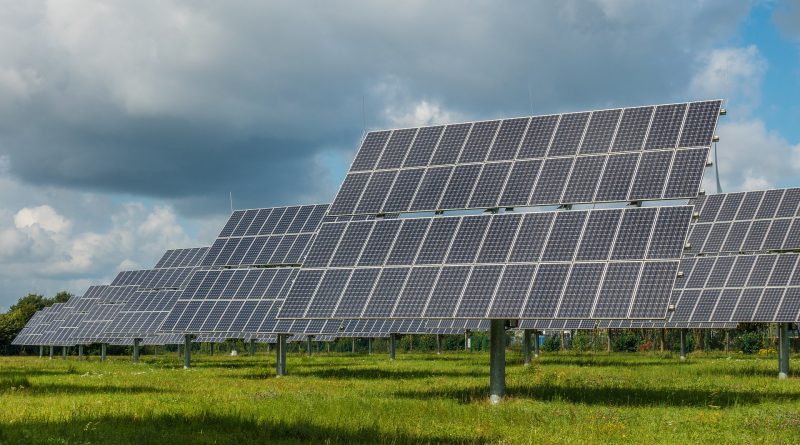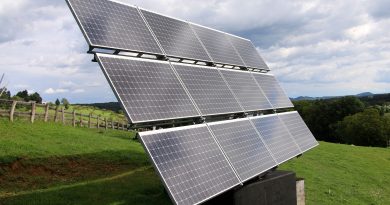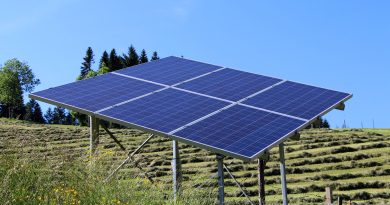Exploring Monocrystalline Solar Panels: A Comprehensive Guide
Monocrystalline solar panels are a popular choice when it comes to harnessing solar energy. These high-efficiency solar panels are made from a single crystal structure, providing numerous advantages over other types of solar panels. In this blog, we will explore what monocrystalline solar panels are, how they work, and why they are gaining popularity in the renewable energy sector.
What are Monocrystalline Solar Panels?
Monocrystalline solar panels, also known as single crystalline solar panels, are made from a single continuous crystal structure. These panels are manufactured using high-purity silicon, known as polysilicon, which is then melted and formed into a cylindrical ingot. The ingot is then sliced into thin wafers to create individual solar cells. These cells are then interconnected and encapsulated within a protective layer to form a monocrystalline solar panel.
The main characteristic of monocrystalline solar panels is their uniform dark appearance, typically in a black or dark blue color. This is due to the high-purity single crystal structure, which allows for better light absorption and conversion efficiency.
How do Monocrystalline Solar Panels Work?
Monocrystalline solar panels work by converting sunlight into electricity through the photovoltaic effect. When sunlight hits the solar panels, the silicon cells absorb the photons (particles of light) and create an electric field. This electric field then allows electrons to flow, thus generating a direct current (DC) which can be used to power electrical devices or stored in a battery. To convert the DC into alternating current (AC) for household or commercial use, an inverter is required.
The single crystal structure in monocrystalline panels provides several advantages. Firstly, the uniformity of the crystal lattice allows for a more homogenous movement of electrons, resulting in higher efficiency. Secondly, the purification process for producing monocrystalline solar panels removes impurities, which can hinder performance and reduce overall efficiency. These factors contribute to monocrystalline panels having some of the highest conversion efficiencies among solar panel technologies, typically ranging from 15% to 24%.
Advantages of Monocrystalline Solar Panels
1. High Efficiency: Monocrystalline solar panels have one of the highest conversion efficiencies among solar panel technologies. The uniform crystal structure allows for better light absorption and electron movement, resulting in a higher electricity output.
2. Space Efficient: Monocrystalline solar panels also have a higher power density, meaning they produce more electricity per square meter compared to other types of solar panels. This makes them ideal for installations with limited space.
3. Long Lifespan: Monocrystalline solar panels have a long lifespan. On average, they can last 25 to 30 years with regular maintenance. This makes them a cost-effective investment for long-term renewable energy use.
4. Improved Performance in Low Light Conditions: Monocrystalline panels have better low light performance compared to other types of solar panels. This means they can still generate electricity even during cloudy days or in partially shaded areas.
5. Aesthetically Pleasing: The uniform dark appearance of monocrystalline solar panels can be considered more visually appealing compared to other types of solar panels. This makes them a popular choice for residential installations.
Disadvantages of Monocrystalline Solar Panels
While monocrystalline solar panels have many advantages, there are a few disadvantages to consider:
1. Higher Cost: Monocrystalline solar panels tend to be more expensive compared to other types of solar panels. The manufacturing process and the use of high-purity silicon contribute to the higher cost.
2. Fragility: Monocrystalline solar panels are more fragile compared to other solar panel technologies. They can be easily damaged by external factors such as impact or hail. However, with proper installation and maintenance, this risk can be minimized.
3. Temperature Sensitivity: Monocrystalline panels are sensitive to high temperatures, which can reduce their efficiency. It is important to consider this factor when installing the panels in hotter climates.
Conclusion
Embark on a journey of solar excellence with SolarClue®’s comprehensive guide to monocrystalline solar panels. Understand their unique characteristics, manufacturing process, and efficiency ratings. Gain insights into durability, applications, and optimization strategies for different installations. Compare panels from various manufacturers, considering additional features and user reviews. Stay informed on the latest advancements in monocrystalline technology for well-informed decisions. Address environmental concerns with information on recyclability and sustainable practices. Learn how to optimize panel performance through proper installation, maintenance, and technological enhancements. Join our community to share experiences and contribute to a collaborative platform of continuous learning and solar excellence.
Frequently Asked Questions
SolarClue® distinguishes monocrystalline solar panels and provides users with insights into their unique characteristics, efficiency, and advantages. We offer comprehensive information on how monocrystalline technology enhances solar energy generation.
SolarClue® explains the manufacturing process of monocrystalline solar cells, detailing the production of single-crystal silicon ingots, their slicing into wafers, and assembly into solar panels. Users gain a clear understanding of the quality and efficiency associated with this method.
SolarClue® guides users in understanding the efficiency ratings of monocrystalline solar panels. We explore factors like temperature coefficients, degradation rates, and performance under varying light conditions. This information empowers users to make informed decisions based on their specific needs.
SolarClue® addresses questions about the durability and lifespan of monocrystalline solar panels. We provide insights into the robust materials used, weather resistance, and maintenance tips, ensuring users understand and maintain long-term reliability and performance.
SolarClue® elaborates on the applications of monocrystalline solar panels. We provide information on their suitability for residential, commercial, and industrial installations. Users learn how to optimize the benefits based on specific energy requirements and usage patterns.
SolarClue® assists users in comparing monocrystalline solar panels from different manufacturers. We offer insights into additional features, warranties, and user reviews. This facilitates well-informed decisions, ensuring satisfaction with users’ solar investment.
SolarClue® stays updated on the latest advancements in monocrystalline solar technology. We provide users with information on innovations, emerging trends, and improvements in efficiency or design. This ensures users have the latest insights for their decision-making process.
SolarClue® addresses concerns about the environmental impact of monocrystalline solar panels. We offer insights into their recyclability, end-of-life disposal considerations, and any sustainable practices advocated by manufacturers. This information promotes eco-friendly choices among users.
SolarClue® educates users on optimizing the performance of monocrystalline solar panels. We provide tips on proper installation, maintenance practices, and potential technological enhancements. This information helps users enhance the efficiency and output of their solar energy systems.
SolarClue® encourages user engagement within the community. We allow individuals to share experiences, ask questions, and provide insights related to monocrystalline solar panels. This creates a collaborative platform for continuous learning and knowledge exchange among users.



